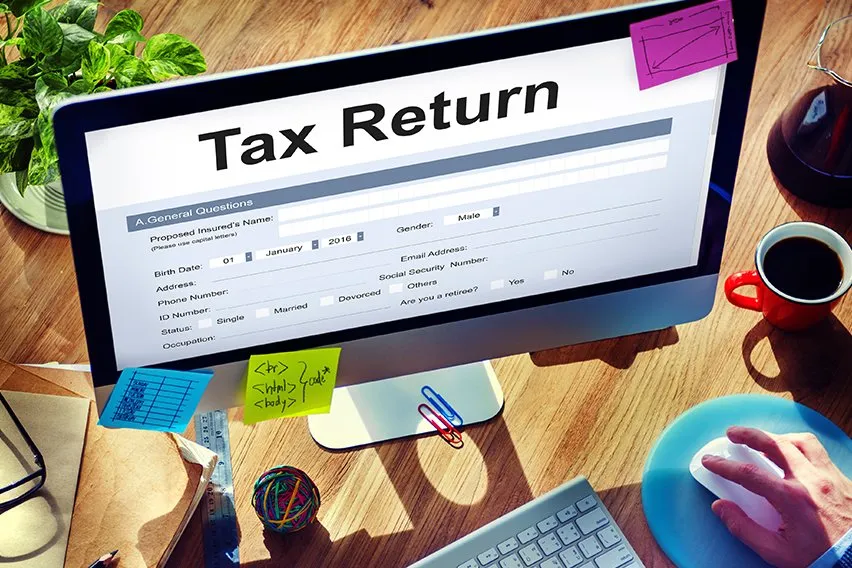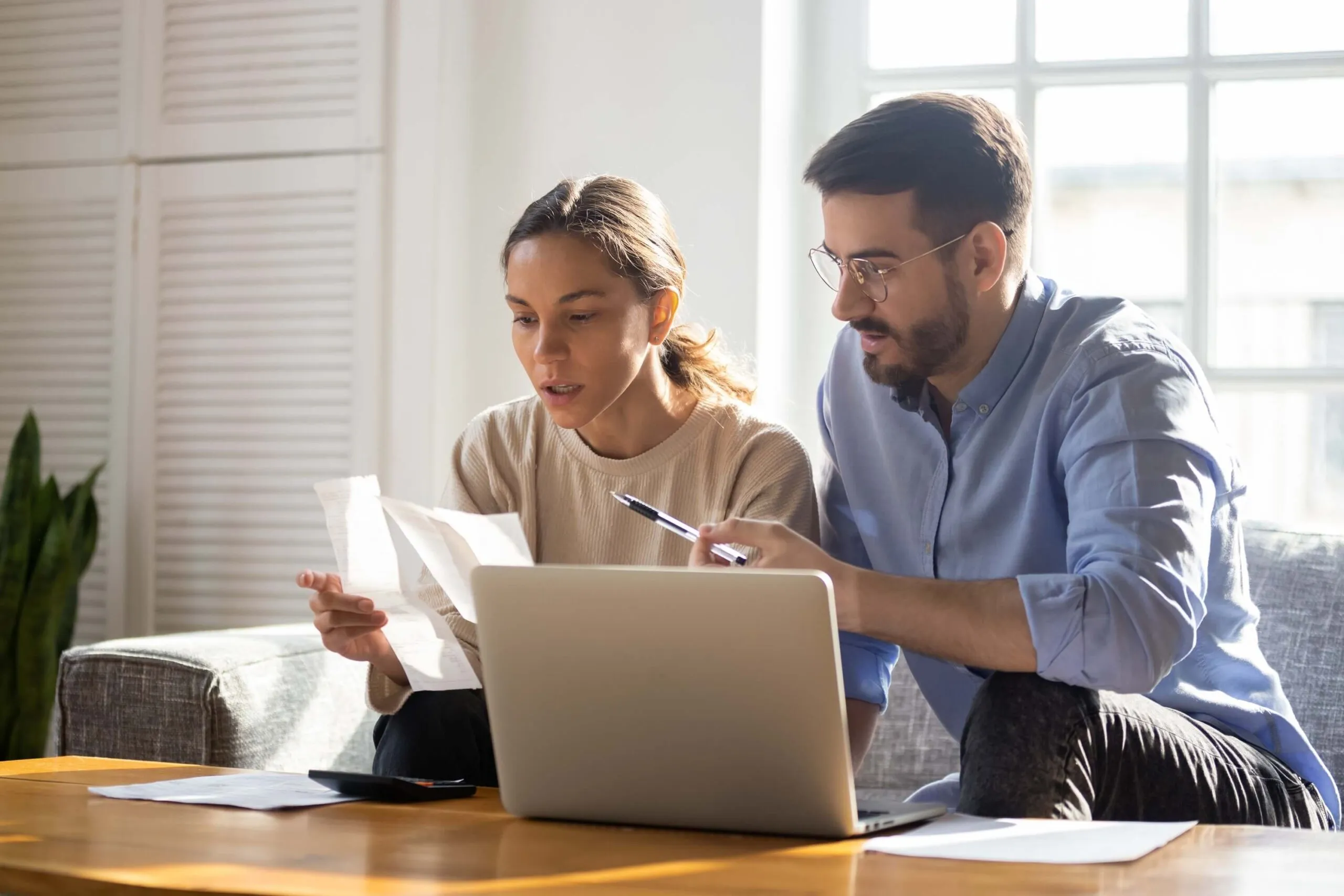Freelancer Taxes: Ultimate Guide for Tax Filling & Smart Savings

Freelance work offers an opportunity to supplement a primary income. Many people even choose freelance work as a primary source of income because it provides freedom they don’t get from a standard 9-to-5 job. The benefits freelance work offers also come with challenges, especially around tax time.
The IRS categorizes freelance work as self-employment and it’s important to understand the ins and outs of freelancer taxes. Self-employment is subject to specific tax obligations. Understanding freelancer taxes and their implications can help freelancers avoid tax bill shock, penalties, or a tax audit.
If a person is employed and freelance work is a side job, they may ask their employer to increase their tax withholding by filing a W-4 form.
Key Takeaways
- Freelancers are considered self-employed by the Internal Revenue Service (IRS).
- Self-employed individuals must declare any net freelance income over $400.
- Freelancers pay federal income tax, state and local taxes, and self-employment (SE) tax.
- Pay estimated taxes quarterly if you expect to owe more than $1000.
- The business legal structure has tax implications for self-employed individuals.
- Contribute to tax-deferred investments to offset your tax liability.
Table of Contents
- Freelancing vs. Employment: Understanding the Tax Difference
- Calculate Estimated Taxes for Freelancers
- Tax Deductions for Freelancers: Lowering Your Tax Bill
- Filing Your Freelance Taxes: A Step-by-Step Guide
- Tax Traps for Freelancers and How to Avoid Them
- Tax Planning Strategies for Freelancers
- When To Hire a Tax Professional for Freelancers
- Simplify Freelancer Taxes With FreshBooks
- Frequently Asked Questions
Freelancing vs. Employment: Understanding the Tax Difference
There are significant differences between the tax responsibilities for freelancers and employed individuals. All citizens who meet the filing threshold must file a tax return or face consequences in addition to interest and penalties, including fines and potential criminal charges. 1 The threshold for a freelancer is $400 or more in gross income.
Employed individuals, or wage earners, participate in a pay-as-you-earn scheme. Their employer withholds Social Security and Medicare taxes and income tax from each paycheck. At the end of the year, wage earners tally and report their deductions, credits, and additional income on their tax return. The result is either a refund or a balance owed and determines their tax bracket for the following year.
Freelancers don’t have employers who withhold tax. They are responsible for paying self-employment taxes and federal and state income taxes from their freelance income. SE tax covers your Social Security and Medicare taxes.
Like employed individuals, freelancers tally and report deductions and credits at the end of the year. The results of the filing determine their potential tax rate for the following year. If your income, deductions, and credits remain the same, you can expect your tax rate to remain the same.
Wage earners have one due date and a potential penalty for late filing and payment. Freelancers must pay their estimated taxes quarterly as opposed to the pay-as-you-earn scheme. Freelancers have 4 payment dates, each with a potential penalty for late payments.

Calculate Estimated Taxes for Freelancers
Freelancers use the estimated tax method to pay income and self-employment taxes. The estimated tax method applies to all income not subject to withholding. It’s important to correctly calculate and pay your taxes on time to avoid penalties. You must pay estimated taxes 2 if you meet this criteria:
- After subtracting refundable credits and withholding tax from your total tax, you will owe $1,000 or more for the current tax year.
- And, you anticipate these taxes and credits will be less than 90% of the tax on your 2024 tax return or 100% of the tax shown on your 2023 tax return, whichever is less.
The difficulty for many freelancers is correctly calculating their estimated taxes. Follow these steps to calculate your expected taxes:
Step 1: Gather your information, including your anticipated adjusted gross income (AGI), taxes, credits, deductions, taxable income for the year, and your annual income tax for the previous year.
Step 2: Calculate your SE tax. The 2024 SE tax for 2024 3 is 15.3% and includes Social Security and Medicare taxes.
Step 3: Calculate your itemized deductions, including 50% of your estimated SE tax.
Step 4: Subtract your deductions from your adjusted income.
Step 5: Use the 2024 tax rate schedules to determine your tax rate and calculate your tax on the result of Step 3.
Step 6: Deduct your credits from your result in Step 4 for your total 2024 estimated tax credits.
Step 7: Multiply your total 2024 estimated tax by 90% and compare it to your previous year’s required annual payment. Use the lesser of the 2 to payments in the next step.
Step 8: Subtract any income tax withheld from any wage jobs from the result in Step 7. You do not need to make estimated payments if the result is less than $1,000.
Step 9: Divide your final result by 4 to get your quarterly estimated tax payment amounts.
Tax Deductions for Freelancers: Lowering Your Tax Bill
Familiarize yourself with potential tax deductions to help lower your income taxes and overall tax liability.
Home Office Expenses
Freelancers can deduct home office expenses as long as it is their principal place of business and is in compliance with IRS regulations 4. It must be a dedicated space regularly used as an office and cannot double as a living room, kids’ playroom, or serve another function part of the time. The deduction cannot exceed your gross income from the business.
You have 2 options when calculating your home office expenses—a regular method and a simplified option 5. The simplified method uses a set deduction of $5 per square foot up to 300 square feet. You can still claim home itemized deductions in full on your Schedule A. There is no depreciation deduction.
With the regular method, taxpayers calculate each portion individually. First, determine the square footage relative to your home. For example, if your home is 2,000 square feet and your home office is 350 square feet, you are using 17.5% as a home office. Next, calculate 17.5% of your mortgage interest, utilities, repairs, insurance, and depreciation. Deduct these itemized amounts on your business schedule. You can still deduct the remaining 82.5% on your Schedule A.
Business Equipment and Supplies
Business equipment and supplies can make up a substantial portion of the total deductions against the taxes for freelancers. The key to deducting these items is maintaining accurate records and receipts.
Any items you need for your business’s day-to-day operations 6 are tax deductible in the tax year you use them. Pens, printer paper, and business cards are common items that freelancers deduct. You can deduct incidental supplies kept on hand in the year you purchased them if you do not keep a record of when they’re used, you don’t take a beginning or end-of-year inventory, and deducting in this way doesn’t distort your income.
Any item that will last significantly longer than a year is considered a capital asset and must be depreciated rather than listed as an itemized deduction. Examples of capital assets include printers, tablets, and computers. You can deduct repairs to capital assets as an itemized business expense.
Manufacturing supplies, used indirectly or directly, are listed as the cost of goods sold. These items do not qualify for itemized business equipment and supplies deductions.
Software Subscriptions and Online Tools
Deductions for software subscriptions and online tools necessary for your freelance work can offset the owed tax for freelancers. Many freelance workers have web pages that catalog their work, outline their services, and even provide interactive real-time features like chatbots. All the services and features associated with your work webpage are tax deductible.
You can also deduct digital newspaper and magazine subscriptions if they are related to your field. For example, a freelance journalist can deduct various news subscriptions. A freelance designer can deduct art magazines.
Cloud-based editing and drawing tools, programs for collaborative work, cloud storage, inventory trackers, and other apps necessary for your business operations are also deductible.
For simplicity, many freelancers sign up for yearly subscriptions rather than monthly. This way, you only have 1 receipt rather than 12 and in many cases, an annual subscription has associated cost savings.
Professional Development Costs
Freelancers need to stay at the top of their field to remain relevant and win contracts. In some instances, it’s not enough to have post-secondary training. Advanced education and continued professional development for skill enhancement can offer new insight into things like technological advances in your field and increase your earning potential.
You can deduct professional development and education expenses if they directly help maintain or improve your skills. 7 Education that qualifies you for a different job or change of field is not deductible. It must apply to the same general type of work.
You can deduct your tuition, registration fees, lab fees, and related expenses. You can also deduct certain transportation and travel costs and other educational expenses, such as course materials.
Professional development and education expenses are not the same as the American Opportunity Tax Credit (AOTC) and the Lifetime Learning Credit (LLC). These credits are for taxpayers actively pursuing education that leads to a new career.
Travel Expenses (With IRS Guidelines)
You can deduct travel expenses if the travel directly relates to your work. 8 The IRS guidelines classify work-related travel as any travel for work that lasts longer than an ordinary day’s working hours and you need sleep to meet the demands of your work while you’re away.
You can deduct the costs of the mode of transportation, including air, train, or bus fare, or gas expenses for your vehicle between your home and business destination. You can also deduct transportation costs between the airport, train station, or bus depot and a hotel, as well as between the hotel and a work location.
You can deduct shipping costs for baggage and sample or display material between regular and temporary work locations.
You can also deduct your meals, lodging, dry cleaning and laundry, business calls, faxes, and wifi charges, as well as tips paid for services related to these expenses.
Keep all your receipts and the receipts for similar ordinary and necessary business travel expenses.
Filing Your Freelance Taxes: A Step-by-Step Guide
Take the guesswork out of filing your freelance taxes by following our step-by-step guide below.
Gather the Necessary Documents
When it’s time to file your taxes, you’ll need to gather the necessary documents and information.
Gather any paid invoices and Form 1099-NECs (non-employee compensation) you received. Employers are obligated to issue a Form 1099-NEC to report payments of $600 or more to contractors and freelance workers. They must issue these forms by January 31st following the tax year they apply to. Correlate the paid invoices with matching Form 1099-NECs.
You should have receipts for all your deductibles. Collecting, labeling, and filing these throughout the year can simplify this process at tax time. Other relevant documents include canceled checks and student loan interest payments (Form 1098-E).
You’ll need your relevant numbers including your business number, Social Security number (SSN), and any state registration numbers. These aren’t necessarily paper documents but the digital PDFs or confirmation emails will have information that can help you complete the main information on your tax return.
Choose the Right Tax Filing Method
You may wonder how you do your taxes as a freelancer. You have 2 options—you can file itemized deductions or take the standard deduction. You can’t switch methods midway through your return.
The standard deduction is a flat amount calculated based on your filing status. The standard rates for 2024 are:
- $14,600 if you are single or married filing separately
- $29,200 if you are married filing jointly or a surviving spouse
- $21,900 if you are filing as head of household
If you file using the itemized method, you calculate each deduction separately. You cannot use the standard deduction method if you are married filing separately and your spouse is filing using the itemized method. If your accounting period changes and you are filing for less than 12 months, you must use the itemized method. 9
For your first year filing as a sole proprietor, or if there have been significant changes in your tax situation since last year, calculate your itemized deductions. Compare the result with the applicable standard deduction amount. Use whichever method yields the larger amount.
Common Tax Forms for Freelancers
How you file taxes as a freelancer is very similar to filing as a wage earner.
Freelancers operating as sole proprietors file their income taxes on Form 1040, US Individual Tax Return. 10. This form is the same as the one a wage earner uses to file their income taxes, but instead of copying the information from a W2, you enter the information you gathered while preparing to do your taxes.
Complete a Schedule A (Form 1040) if you are filing itemized deductions for your home. 11 Do not enter business deductions on this form, only general personal deductions.
Because you are operating a business, you’ll fill out a Schedule C (Form 1040), Profit or Loss from a Business (Sole Proprietorship). 12 Enter all your business-related deductions, cost of goods sold, and home office deduction on this form.
Complete A Schedule SE (Form 1040), Self-Employment tax, to calculate and report tax due on self-employed earnings. 13 The information you give on this form will determine your benefits under the Social Security program and confirm you’ve correctly estimated tax payments.
Filing Electronically vs. Paper Return
Freelancers can file a paper tax return or you can file electronically.
When you file a paper tax return, you count on the speed of the mail service to get your return to the tax center on time. You can use Private Delivery Services (PDS) to ensure adherence to the ‘timely mailing as timely filing/paying’ rule. Each state has an assigned ‘Where to File‘ address. Confirm your correct location before you mail your return in.
Even with the faster delivery, paper filings take several weeks longer to process than filing electronically. Filing with eFile is easy and convenient. Tax software can guide you through the process and you may qualify to file for free using Direct File or a Free File partner. If your income is less than $64,000, you can eFile for free using an IRS-certified volunteer.
The eFile system is safe and secure, utilizing encryption technology for identity theft protection. If you are entitled to a refund, you can get it faster with eFile through direct deposit rather than waiting for a check in the mail. You can also schedule an online payment if you owe taxes.
Tax Traps for Freelancers and How to Avoid Them
These 3 tax traps can have negative consequences and impact your overall tax liability.
Failing To Pay Estimated Taxes: Penalties and Consequences
Failing to pay your estimated taxes on time results in a failure to pay penalty. The penalty is a percentage of the taxes you didn’t pay.
In most cases, you’ll receive a notice or letter indicating you have a penalty for failing to pay estimated taxes on time. However, if this is your first year as a sole proprietor, the obligation is on you to make your quarterly tax payments and you may not receive a letter.
The penalty for failing to pay estimated taxes is 0.5% of the unpaid tax for each month it’s due. The penalty won’t exceed 25% of the total due. The monthly penalty increases to 1% if you don’t pay within 10 days of receiving the notice.
There is also a penalty for failing to file, which is 5% of the unpaid taxes. If you have a failure to file penalty and a failure to pay penalty, the filing penalty becomes 4.5% for that month.
If you filed on time and made a payment plan, your penalty is 0.25%.
Mixing Personal and Business Expenses: Keeping Records Straight
Mixing business and personal expenses can muddle your records and complicate your annual tax return. You cannot double deduct your expenses as personal deductions and business deductions because that constitutes fraud and qualifies as negligence or disregard of the IRS rules or regulations. The penalty is 20% of the underpayment of tax.
You must keep meticulous records and receipts of all your personal and business expenses. Utilizing tracking software can help you keep your expenses separated and properly categorized.
You can also consider opening a business bank account. Make all your payments for business expenses from your business account. This creates a ledger that you can use to corroborate your receipts. Some tracking software will even link with your account to streamline the process.
Underestimating Self-Employment Tax: Planning for Tax Day
When tax planning, do your best to avoid underestimating your self-employment tax obligation. Underestimating will negatively impact how you pay taxes as a freelancer and your annual tax return. You can have penalties levied against you and experience tax bill shock from your total due come tax time. You may think that if you overpay, that money is gone, but the reality is that any overpayment in quarterly estimated tax payments is carried forward to the next year or issued as a tax refund.
The IRS provides a tax calculation worksheet to help take the guesswork out of calculating your income and Social Security and Medicare taxes. Use the standard deduction amounts in your estimate. Even if you itemize later, that amount should equal more than the standard deduction rate and leave you in a better position than assuming expenses you haven’t spent yet.
Review your tax position every month. As your estimated business income becomes a reality, make the necessary adjustments to your tax calculation worksheet. Increase your quarterly taxes throughout the year as needed rather than waiting until the end of the year.
Tax Planning Strategies for Freelancers
You can get even more out of your hard-earned dollars by utilizing the tax planning strategies outlined below.
Setting Up a Retirement Plan
You can offset your tax obligation by investing in your retirement. Besides the obvious benefit of saving for a time when you can retire, the money you put into a plan each year equals a potential deduction.
Not all retirement plans count against your taxes. For example, you cannot deduct Roth IRA contributions. You can deduct traditional IRA contributions in full if you or your spouse aren’t covered by a work plan (SEP IRA or similar).
A one-participant or solo 401(k) can also help you plan for retirement and will help offset your tax liability. However, if your business expands and you hire employees, there are implications with a solo 401(k).
You can set up a retirement plan through your bank or online portfolio service. There are several products to choose from and the right product for you will depend on your risk/reward comfort level and how you want to invest your hard-earned dollars. Shop around and speak to a financial advisor before investing.
Maximizing Health Savings Account (HSA) Contributions
A Health Savings Account (HSA) allows people with a high-deductible health plan (HDHP) to save and pay for expenses not covered by their plan. You are only eligible for an HSA if you have a qualified HDHP, are not enrolled in Medicare, have no other health coverage, and are not claimed as a dependent.
Your yearly contributions are deductible even if you choose not to itemize your deductions. However, your contribution limits are much lower with an HSA than other tax savings plans. Individual limits are $4,150 and family limits are $8,300.
Any money you take from your HSA for medical expenses is non-taxable. Unused amounts are carried over to the next year.
Opening an HSA is a similar process to opening an IRA. Speak to your financial advisor about your best options.
Tax-Advantaged Investment Options
Tax-deferred investment options offer an up-front tax break. Tax-deferred accounts include solo 401(k)s and IRAs. Tax-exempt investments include Roth IRAs. The money contributed comes from post-taxed funds and offers no upfront tax benefit. However, the money in the account grows tax-free, as do retirement withdrawals.
An important distinction is how you invest your money inside your IRA. When you invest in mutual funds or tax-deferred annuities from within your traditional IRA, you’re investing tax-deferred money. The drawback with tax-deferred investments is the limits. Your yearly limit for 2024 for IRA contributions is $7,000, and your limit for a 401(k) is $23,000. Your catch-up limit for investing after the age of 50 is an additional $1,000 for the IRA and $7,500 for the 401(k).
Tax-deferred annuities are a way for investors to gain interest without paying tax on the gains. Mutual funds offer a triple reward because the interest tax is exempt at the federal level and sometimes isn’t taxable at the state or local level.
When To Hire a Tax Professional for Freelancers
Paying a professional can seem like an extravagant expense when you’re just starting your business. However, a professional can offer insight you may not have thought of or know how to apply to your situation. There are a few situations that warrant hiring a tax professional.
Your business structure has immediate tax implications. A sole proprietorship is fairly straightforward but if you’ve elected to register as an S-corporation, a tax professional can help you maximize your benefits.
In this gig economy, you may have more than one income stream. For example, you may own a short-term rental property, provide freelance marketing services, and have a candle-making business. Each of these income streams has different rules and regulations attached. Navigating each can take time away from the actual work. Leave it to a professional to ensure your businesses are compliant.
You may have significant tax credits or deductions. A tax professional can help you get the most out of your hard-earned dollars and help you avoid an audit. If you do get audited, a tax professional can help you navigate the process and appropriately prepare your documents.
Recommended Tools and Apps for Freelancer Bookkeeping
Whether or not you seek the assistance of a professional, utilize accounting software for freelancers to help streamline your process and simplify tax time.
Accounting software can help you track, record, and categorize your expenses using digital support like receipt photographs. It can extract the data from the receipt and enter it into your account. It can record tax and tips, separating each into the appropriate category.
Accounting software can also help you create invoices, receive and track payments, and reconcile your accounts by linking with your bank. It can also provide collaborative permissions to give your tax professional real-time access to your books.
Accounting software can also save you time by automating some of your processes and keeping all your records in one cloud-based place.
Simplify Freelancer Taxes With FreshBooks
Doing your taxes as a freelancer is straightforward when you have the right information and trusted support. FreshBooks’ tax accounting software features advanced tools to help simplify the tax preparation process. The intuitive interface is easy to use, and the resource hub can answer all your small-business accounting questions with easy-to-follow step-by-step guides.
Signing up for FreshBooks tax accounting software has never been easier, thanks to the free trial. Get started and try FreshBooks for free today to find out how easy freelancer accounting can be.

FAQs About Freelancer Taxes
FreshBooks has the answers to frequently asked questions about freelancer taxes.
How much money do I have to make freelancing to be subject to federal income taxes?
If you made $400 in net earnings from self-employment income, you must declare the income on your tax return. Whether you have to pay taxes and how much will depend on your tax rate, deductions and credits, investments, and other factors. For more information on tax rates for self-employed individuals, refer to our guide on how much you can make without filing taxes. We’ve explained different tax rates based on income, age group, and other relevant factors.
Do I need a 1099 as a freelancer?
No, you don’t need a 1099-NEC from all your clients or the companies you worked with. You do need to claim any income, regardless of whether or not you were issued a 1099-NEC. Companies must issue a 1099-NEC to any non-employee paid $600 or more in a tax year.
How much can you make on a 1099 before you have to claim it?
Companies must issue a 1099-NEC to any non-employee paid $600 or more in a tax year. They also report those earnings to the IRS. You must claim all your 1099-NEC amounts as income on your tax return.
Who is exempt from self-employment tax?
You are exempt from paying self-employment tax if you are self-employed and make less than $400 net income a year or if you earn less than $108.28 as a church employee.
How do I report freelance income on my taxes?
Freelancers operating a sole-proprietorship complete a personal tax return on a Form 1040, US Individual Tax Return, plus a Schedule SE (Form 1040) Self-Employment tax, and a Schedule C, (Form 1040), Profit and Loss from a Business.
How do I declare freelance income without a 1099?
You can declare freelance income without a 1099. Keep your records up to date and declare all income on your Form 1040, US Individual Tax Return and Schedule C, (Form 1040), Profit and Loss from a Business.
Resources
- IRS. ‘Who needs to file a tax return’ Accessed March 27, 2024
- IRS. ‘Estimated taxes’ Accessed March 27, 2024
- IRS. ‘Self Employment tax’ Accessed March 27, 2024
- IRS. ‘Home office deduction’ Accessed March 27, 2024
- IRS. ‘Simplified option’ Accessed March 27, 2024
- IRS. ‘Deducting Business Supply Expenses’ Accessed March 27, 2024.
- IRS. ‘Work-related education expenses’ Accessed March 27, 2024
- IRS. ‘Understanding business travel’ Accessed March 27, 2024
- IRS. ‘Topic no. 501, Should I itemize?’ Accessed March 27, 2024
- IRS. ‘Sole proprietorships’ Accessed on March 27, 2024
- IRS. ‘About Schedule A, (Form 1040), Itemized Deductions’ Accessed March 27, 2024
- IRS. ‘About Schedule C (Form 1040), Profit and Loss From a Business (Sole Proprietorship)’ Accessed March 27, 2024
- IRS. ‘About Schedule SE (Form 1040), Self-Employment Tax’ Accessed March 27, 2024
Reviewed by
Sandra Habiger is a Chartered Professional Accountant with a Bachelor’s Degree in Business Administration from the University of Washington. Sandra’s areas of focus include advising real estate agents, brokers, and investors. She supports small businesses in growing to their first six figures and beyond. Alongside her accounting practice, Sandra is a Money and Life Coach for women in business.
RELATED ARTICLES


 Self-Employed Health Insurance Deduction
Self-Employed Health Insurance Deduction How Far Back Can IRS Audit? Everything You Need to Know
How Far Back Can IRS Audit? Everything You Need to Know Itemized Deductions: What They Mean and How To Claim
Itemized Deductions: What They Mean and How To Claim SALT Deduction: How to Write Off State And Local Tax
SALT Deduction: How to Write Off State And Local Tax Federal Solar Tax Credit 2025: What It Is & How Does It Work
Federal Solar Tax Credit 2025: What It Is & How Does It Work Mortgage Interest Deduction: Overview & How It Works
Mortgage Interest Deduction: Overview & How It Works